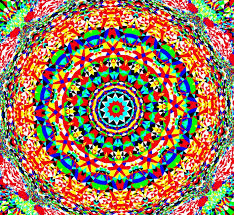If considering the context in which the School of Frankfurt flourished, one can find solid ground for the radicalism of Adorno and Horkeimer’s arguments. For example, the 1930s was the era of the big major studios (MGM, Paramount, Fox, Warner Bros) who exploited the star system and controlled local and international markets through vertical integration, block booking, among other strategies. The prevalence of images and dreams imported from Hollywood has been a reality in other countries where the local industry still struggles to release endogenous movies, and I even remember how video stores used to classify genres where American movies were considered the norm while national movies were grouped under their own subcategory based on their origin (Colombian films) and not their genre.
Mass production of cultural goods led to assume the homogeneity of dreams and a top-down determination in the hands of ‘evil’ producers for these two authors that supposedly represents the end of the individual. I am always surprised with the fascination exerted by boy bands all over the world and the disposability of these artists every 3 years, if lucky enough to survive that long.
I think the main contribution of this approach was to reveal the high concentration of the media market and standardization of goods or objective nature of products (1244). As critics have pointed in subsequent years (Miege, Garnham and Hesmondhalgh, among others), there are serious flaws in the main arguments of the Cultural Industry school that deserve further discussion. First, the term of Cultural Industry in singular overlooks the different conditions of cultural sectors or that the terms refers to the way of producing culture rather than a specific economic sector, so Miege (1989) prefers to use the term in plural “Cultural industries”. Right now, the term has even changed to Creative industries and Hesmondhalgh (2007) has argued that this distinction is to please the current neoliberal context.
Another serious observation is the assumption that company directors represent a monolithic and coordinated group free of contradictions or struggle of power or that there are other forces acting in the market (state, civil society, new comers, multiple technology alternatives etc.). We all have witnessed how the arrival of video rental/purchase, cable television, video on demand and streaming.
Last but not least is the role of the public as robotic recipients of the cultural content with no sense of consciousness or imagination (1244) when experiencing cultural goods, especially sound films. That’s why I found Certau’s counter-argument of the gap between those products and the use of them (1250) very interesting because it allows to have a sense of play toward the determination of taste.
References:
Hesmondhalgh, David. The cultural industries. Los Angeles: Sage, 2007.
Miege, Bernard. The Capitalization of Cultural Production. New York, N.Y.: International General, 1989.

